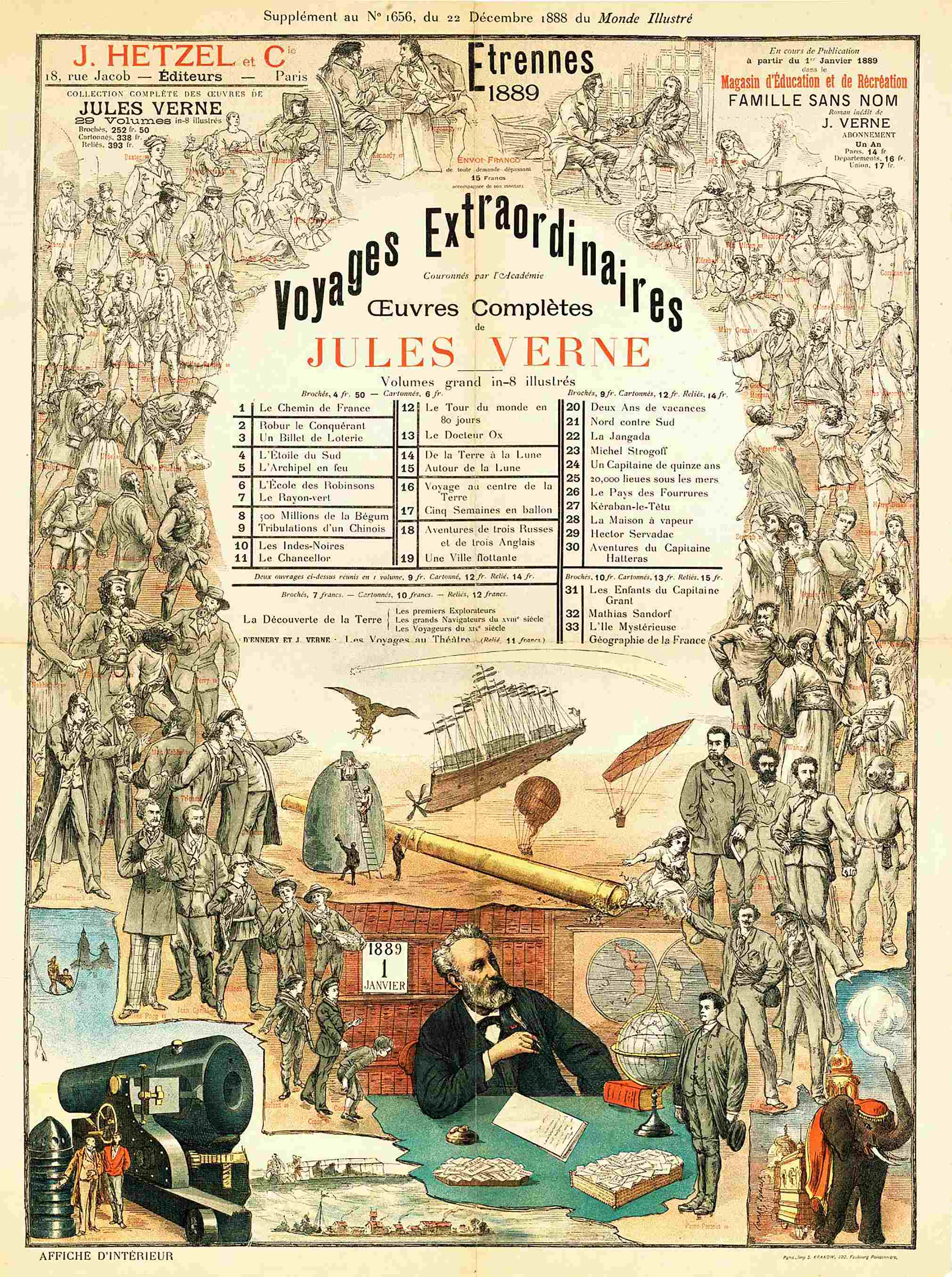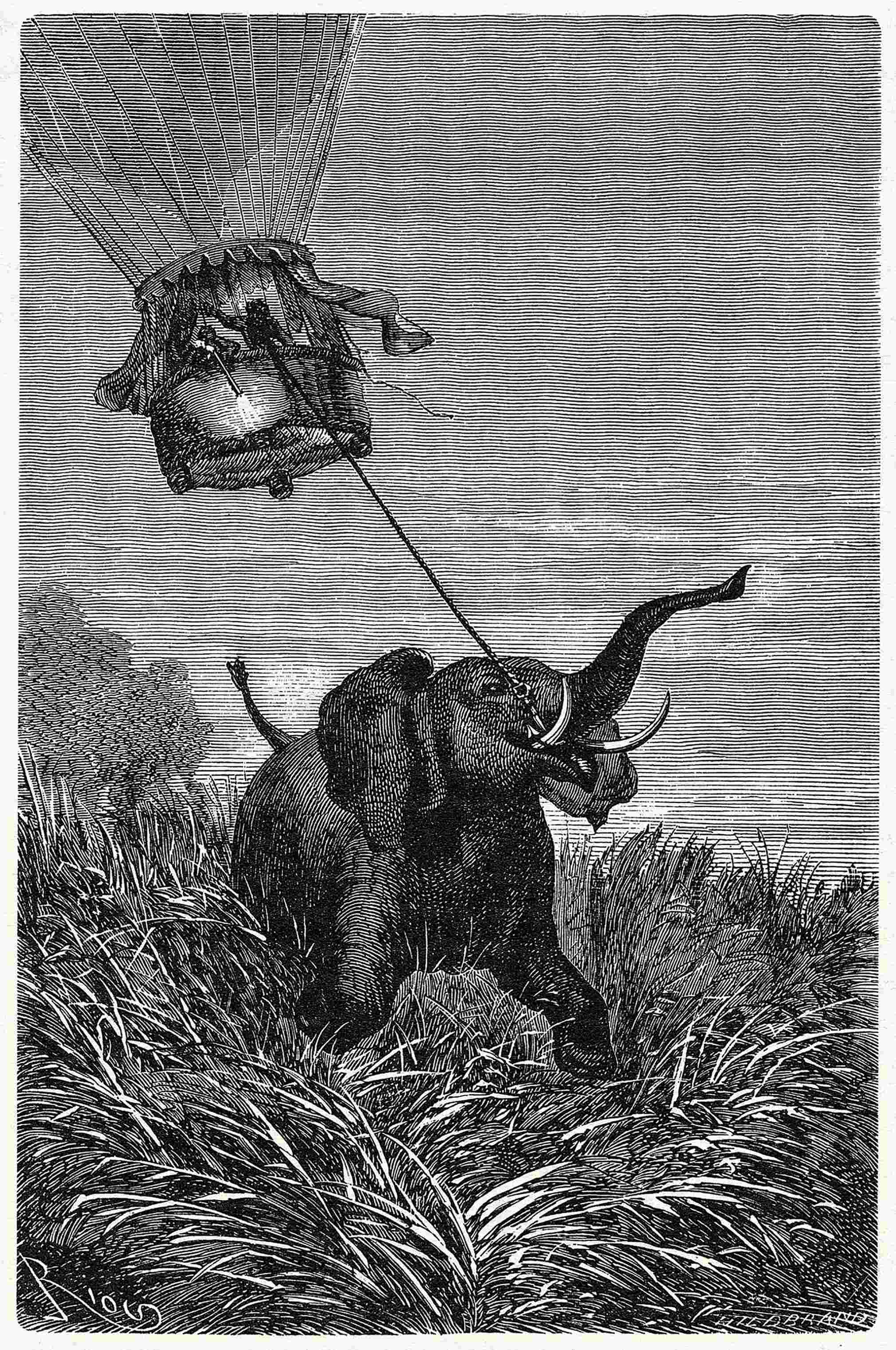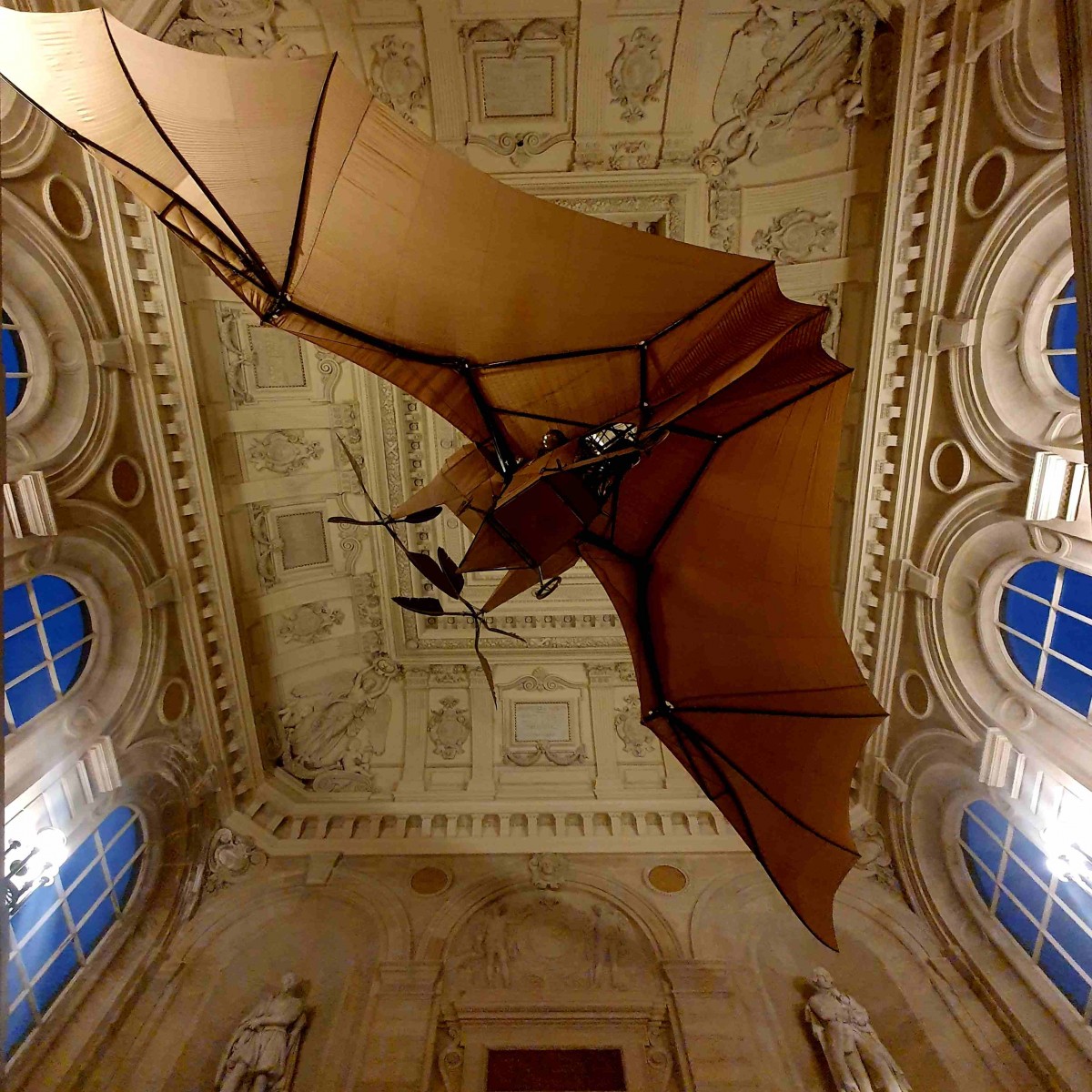
Jules Verne et Cinq Semaines en Ballon
Imaginez-vous transporter vers les contrées lointaines de l'Afrique, un continent mystérieux, riche d’histoires et de paysages, où les rivières serpentent majestueusement la savane, où des ethnies fascinantes et des animaux sauvages peuplent des territoires immenses.
Un voyage extraordinaire
C'est sur le continent Africain que débute le récit de l'écrivain français Jules Verne. L'auteur le plus traduit au monde. le premier roman de la série au succès mondial " Les Voyages Extraordinaires ". Le livre est publié en 1863 dans la bibliothèque d’éducation et de récréation des Editions Hetzel. Le manuscrit que Verne avait proposé à Pierre-Jules Hetzel était initialement intitulé « Voyage dans l’Air ». L’éditeur avait refusé le titre qu’il trouvait impropre pour un roman destiné à l’origine à la jeunesse.

Cinq semaines en Ballon est le pari du Docteur Samuel Fergusson de traverser l’Afrique d’Est en Ouest par la voie des airs. Un projet ambitieux pour l’époque Victorienne qui déclenche l’enthousiasme des membres de la Société Royale de Londres géographique. Trois anglais font partie du voyage. A bord du ballon « Victoria », une machine volante entre ballon à gaz et montgolfière, le Docteur Samuel Fergusson, audacieux personnage, concepteur et maître d’œuvre de l’expédition, est accompagné par d’intrépides comparses Joseph Wilson (« Joe », le valet) et Richard Kennedy (« Dick », le chasseur). Le trio quitte en ballon l’île de Zanzibar en vue d’effectuer, c’est le sous-titre du roman, un « voyage de découvertes en Afrique ». Cette aventure se déroule dans un contexte où les grandes explorations et les découvertes scientifiques suscitent un engouement sans précédent en Europe à l’époque. Une traversée du continent Africain dans le sens de la largeur qui n’avait jamais été réalisé auparavant. Zanzibar point départ du voyage est une île située au large de la côte Est de l'Afrique, dans l'océan Indien. Le ballon survole l'Afrique Centrale, passant le long des rives du lac Tanganyika, en Tanzanie. L’un des Grands Lacs d’Afrique découvert en 1858 par des explorateurs britanniques, Richard Francis Burton et John Hanning Speke à la recherche des sources du Nil. Les aventuriers atteignent le célèbre lac Victoria, partagé entre la Tanzanie, l'Ouganda et le Kenya. Une fois passé la ligne de l’Equateur, le voyage se poursuit au nord du lac Victoria, traversant une partie du Soudan, situé dans la région nord-est de l'Afrique puis survole ensuite l'Égypte, offrant des vues spectaculaires sur les monuments emblématiques tels que les pyramides et le Sphinx. La traversée se termine par un atterrissage à Saint Louis au Sénégal sur les bords de la mer Méditerranée.

Une épopée aérienne dans des conditions mystérieuses, imprévisibles, tantôt favorables, tantôt défavorables ! Les voyageurs et la montgolfière sont confrontés aux aléas du voyage en terres inconnues. L'équipage essuie des conditions climatiques périlleuses, notamment des tempêtes de sable, des vents violents, des averses torrentielles et des orages électriques. Des conditions de Deep Nature qui mettent à rude épreuve les équipements.
Les débuts de l'aérostation au XVIIIe siècle avec les Frères Montgolfier et les premiers aéronautes du XIXe siècle comme le premier pilote au monde, le français Clément Ader qui ont jeté les bases de la conquête aéronautique.

Leur courage et leurs exploits ont servi d'inspiration à Jules Verne, ajoutant une dimension fascinante à son récit et reflétant l'enthousiasme de l'époque pour les avancées technologiques et l'exploration des cieux. Le ballon dirigeable, ou montgolfière, devient ainsi le vaisseau spatial du XIXe siècle, permettant à Verne de transcender les limites géographiques et de proposer des récits d'aventures uniques.
Jules Verne, l'architecte audacieux des rêves et des voyages extraordinaires, se profile comme le maître incontesté de l'exploration des quatre éléments qui façonnent notre univers : l'Eau, l'Air, la Terre, le Feu. Parmi ces éléments, c'est dans l'infini azur de l'Air que Jules Verne prend son envol, propulsant ses héros vers des horizons aussi vastes que l'imaginaire lui-même. C'est ainsi que naît la fascination pour la lune, célébrée dans les livres "De la Terre à la Lune" et "Autour de la Lune". L’écrivain, en visionnaire éclairé, explore les mystères de l'espace avec une curiosité sans limites. L’auteur français ne se contente pas d'élever ses personnages vers les sommets. Il les ramène aussi sur Terre afin de mieux maîtriser les forces aériennes. Avec le roman "Robur Le Conquérant", l'auteur dépeint un ciel qui n'est plus seulement un lieu d'évasion, mais aussi un terrain de défi, où l'ingéniosité humaine cherche à dompter les vents capricieux et les défis célestes. La vision prospective de Jules Verne est toujours présente et inspirante 160 ans après le premier volume des Voyages Extraordinaires de l’écrivain, Cinq semaines en Ballon.
Un nouveau monde
La toile de montgolfière du ballon de « Cinq Semaines en Ballon » est indéchirable pour faire face à toutes les intempéries du voyage aérien. Dans la ligné de Jules Verne, Orbe Novo est passeur d’histoires. De la toile de montgolfière, Orbe Novo « réimagine » des sacs de voyage circulaires à la fois fonctionnels et responsables. Au lieu de laisser à l'oubli ces matières techniques chargées d'histoires et de « Voyages Extraordinaires », Orbe Novo les transforme en de beaux objets modernes et pratiques, répondant aux nouvelles exigences des nomades contemporains, qu'ils soient hommes ou femmes en quête d'aventure et de sens. L'ère de Jules Verne était marquée par une révolution des transports qui captivait les esprits. Aujourd'hui, les voyages sont réinventés pour répondre aux enjeux climatiques et à la révolution écologique en marche.
Orbe Novo est pionner en sacs de voyages circulaires. Les sacs de voyages Orbe Novo ne sont pas de simples accessoires de mode, ce sont des compagnons et voyage et des témoins d'histoires et de vies antérieures. Ces sacs, confectionnés dans la toile de montgolfière réformée réincarnent le passé. Chaque pièce raconte une histoire, celle d'une matière qui trouve une seconde vie, portant en elle le charme du passé tout en s'adaptant aux exigences contemporaines. L'innovation d'Orbe Novo ne se limite pas à la matérialité de ses créations, mais s'étend à accompagner un nouvel état d'esprit des voyageurs. Chaque exploration devient une opportunité de laisser une empreinte positive et de contribuer à la préservation de notre planète.
Un nouvel art de voyager
Embarquez à bord d'une montgolfière au Grand Est Mondial pour vivre une expérience inédite à 360 degrés. A vous de jouer :
Crédit vidéo : Agence VisionR
Crédit photos : BNF Gallica (illustrations), Orbe Novo
---
English version
Five Weeks in a Balloon
Imagine being transported to the distant lands of Africa, a mysterious continent, rich in history and landscapes, where rivers majestically meander through the savannah, where fascinating ethnic groups and wild animals populate immense territories.
An extraordinary journey
It is on the African continent that the story of the French writer Jules Verne begins. The most translated author in the world. the first novel in the globally successful “Extraordinary Voyages” series. The book was published in 1863 in the education and recreation library of Editions Hetzel. The manuscript that Verne had proposed to Pierre-Jules Hetzel was initially entitled “Voyage dans l’Air”. The publisher had refused the title which he found unsuitable for a novel originally intended for young people.
Five Weeks in a Balloon is Doctor Samuel Fergusson's challenge to cross Africa from East to West by air. An ambitious project for the Victorian era which sparked the enthusiasm of members of the Royal Society of Geographical London. Three English people are part of the trip. On board the “Victoria” balloon, a flying machine between a gas balloon and a hot air balloon, Doctor Samuel Fergusson, daring character, designer and project manager of the expedition, is accompanied by intrepid companions Joseph Wilson (“Joe” , the valet) and Richard Kennedy (“Dick”, the hunter). The trio leaves the island of Zanzibar in a balloon with a view to carrying out, as the novel's subtitle says, a “voyage of discovery in Africa”.
This adventure takes place in a context where major explorations and scientific discoveries arouse unprecedented enthusiasm in Europe at the time. A width-wise crossing of the African continent that had never been done before. Zanzibar, the starting point of the trip, is an island located off the east coast of Africa, in the Indian Ocean. The balloon flies over Central Africa, passing along the shores of Lake Tanganyika, Tanzania. One of the Great Lakes of Africa discovered in 1858 by British explorers, Richard Francis Burton and John Hanning Speke in search of the sources of the Nile. Adventurers reach the famous Lake Victoria, shared between Tanzania, Uganda and Kenya. Once crossing the Equator line, the journey continues north of Lake Victoria, crossing part of Sudan, located in the northeastern region of Africa and then flying over Egypt, offering spectacular views of the iconic monuments such as the pyramids and the Sphinx. The crossing ends with a landing in Saint Louis in Senegal on the shores of the Mediterranean Sea.
An aerial epic in mysterious, unpredictable conditions, sometimes favorable, sometimes unfavorable! The travelers and the hot air balloon are confronted with the hazards of traveling to unkown territories. The crew endures perilous weather conditions, including sandstorms, high winds, torrential downpours and electrical storms. Deep Nature conditions that put a strain on equipment.
The beginning of ballooning in the 18th century with the Montgolfier Brothers and the first aeronauts of the 19th century such as the first world pilot, the French Clément Ader who laid the foundations for the aeronautical conquest.
Their courage and exploits served as inspiration for Jules Verne, adding a fascinating dimension to his tale and reflecting the era's enthusiasm for technological advances and exploration of the skies. The airship, or hot air balloon, thus becomes the spaceship of the 19th century, allowing Verne to transcend geographical limits and offer unique adventure stories.
Jules Verne, the daring architect of dreams and extraordinary journeys, emerges as the undisputed master of the exploration of the four elements that shape our universe: Water, Air, Earth, Fire. Among these elements, it is in the infinite azure of the Air that Jules Verne takes flight, propelling his heroes towards horizons as vast as the imagination itself. This is how the fascination with the moon was born, celebrated in the books “From the Earth to the Moon” and “Around the Moon”. The writer, as an enlightened visionary, explores the mysteries of space with limitless curiosity. The French author is not content with elevating his characters to the heights. He also brings them back to Earth in order to better control the air forces. With the novel "Robur The Conqueror", the author depicts a sky that is no longer only a place of escape, but also a terrain of challenge, where human ingenuity seeks to tame the capricious winds and celestial challenges. Jules Verne's forward-looking vision is still present and inspiring 160 years after the first volume of the writer's Extraordinary Voyages, Five Weeks in a Balloon.
A new world
The hot air balloon canvas of the “Five Weeks in a Balloon” balloon is indecipherable to cope with all the bad weather of air travel. In the line of Jules Verne, Orbe Novo is a teller of stories. From hot air balloon canvas, Orbe Novo “reimagines” circular travel bags that are both functional and responsible. Instead of leaving these technical materials steeped in history and “Extraordinary Journeys” forgotten, Orbe Novo transforms them into beautiful, modern and practical objects, meeting the new demands of contemporary nomads, whether men or women in quest for adventure and meaning. The era of Jules Verne was marked by a transportation revolution that captivated minds. Today, travel is being reinvented to respond to climate issues and the ecological revolution underway.
Orbe Novo is a pioneer in circular travel bags. Orbe Novo travel bags are not just fashion accessories, they are travel companions and witnesses to stories and past lives. These bags, made from reformed hot air balloon canvas, reincarnate the past. Each piece tells a story, that of a material which finds a second life, carrying within it the charm of the past while adapting to contemporary requirements. Orbe Novo's innovation is not limited to the materiality of its creations, but extends to supporting a new state of mind for travelers. Each exploration becomes an opportunity to leave a positive imprint and contribute to the preservation of our planet.
A new art of traveling





